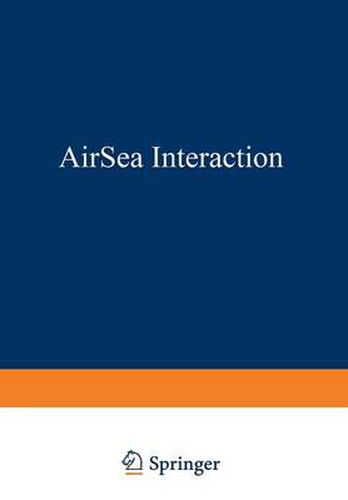Readings Newsletter
Become a Readings Member to make your shopping experience even easier.
Sign in or sign up for free!
You’re not far away from qualifying for FREE standard shipping within Australia
You’ve qualified for FREE standard shipping within Australia
The cart is loading…






This title is printed to order. This book may have been self-published. If so, we cannot guarantee the quality of the content. In the main most books will have gone through the editing process however some may not. We therefore suggest that you be aware of this before ordering this book. If in doubt check either the author or publisher’s details as we are unable to accept any returns unless they are faulty. Please contact us if you have any questions.
During the past decade, man’s centuries-old interest in marine me teorology and oceanography has broadened. Ocean and atmosphere are now treated as coupled parts of one system; the resulting interest in air-sea interaction problems has led to a rapid growth in the sophistication of instruments and measurement techniques. This book has been designed as a reference text which describes, albng with the instruments themselves, the accumulated practical experi ence of experts engaged in field observations of air-sea interac tions. It is meant to supplement rather than replace manuals on standard routine observations or instnunentation handbooks. At the inception a textbook was planned, which would contain only well tested methods and instruments. It was quickly discovered that for the book to be useful many devices and techniques would have to be included which are still evolving rapidly. The reader is therefore cautioned to take nothing in these pages for granted. Certainly, every contributor is an expert, but while some are back ed up by generations of published work, others are pioneers. The choice of topics, of course, is debatable. The types of observa tions included are not exhaustive and topics such as marine aero sols and radio-tracers are omitted, as was the general subject of remote sensing, which was felt to be too broad and evol ving too rapidly. The guideline adopted in limiting size was maximum use fulness to ‘a trained experimentalist new to the field’.
$9.00 standard shipping within Australia
FREE standard shipping within Australia for orders over $100.00
Express & International shipping calculated at checkout
This title is printed to order. This book may have been self-published. If so, we cannot guarantee the quality of the content. In the main most books will have gone through the editing process however some may not. We therefore suggest that you be aware of this before ordering this book. If in doubt check either the author or publisher’s details as we are unable to accept any returns unless they are faulty. Please contact us if you have any questions.
During the past decade, man’s centuries-old interest in marine me teorology and oceanography has broadened. Ocean and atmosphere are now treated as coupled parts of one system; the resulting interest in air-sea interaction problems has led to a rapid growth in the sophistication of instruments and measurement techniques. This book has been designed as a reference text which describes, albng with the instruments themselves, the accumulated practical experi ence of experts engaged in field observations of air-sea interac tions. It is meant to supplement rather than replace manuals on standard routine observations or instnunentation handbooks. At the inception a textbook was planned, which would contain only well tested methods and instruments. It was quickly discovered that for the book to be useful many devices and techniques would have to be included which are still evolving rapidly. The reader is therefore cautioned to take nothing in these pages for granted. Certainly, every contributor is an expert, but while some are back ed up by generations of published work, others are pioneers. The choice of topics, of course, is debatable. The types of observa tions included are not exhaustive and topics such as marine aero sols and radio-tracers are omitted, as was the general subject of remote sensing, which was felt to be too broad and evol ving too rapidly. The guideline adopted in limiting size was maximum use fulness to ‘a trained experimentalist new to the field’.